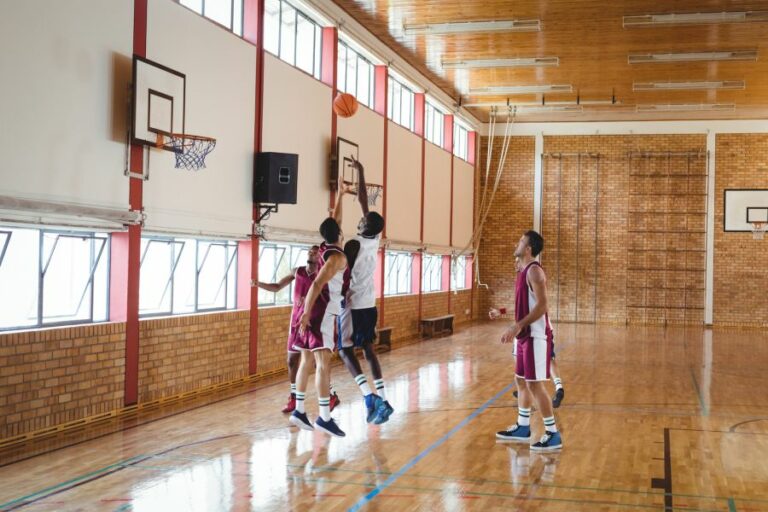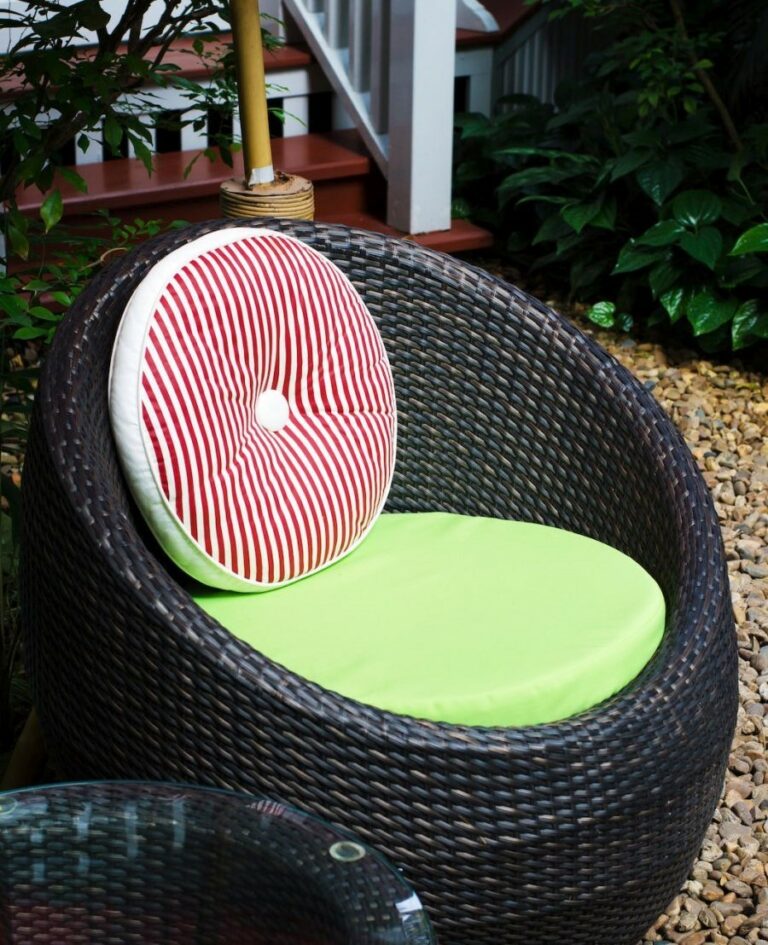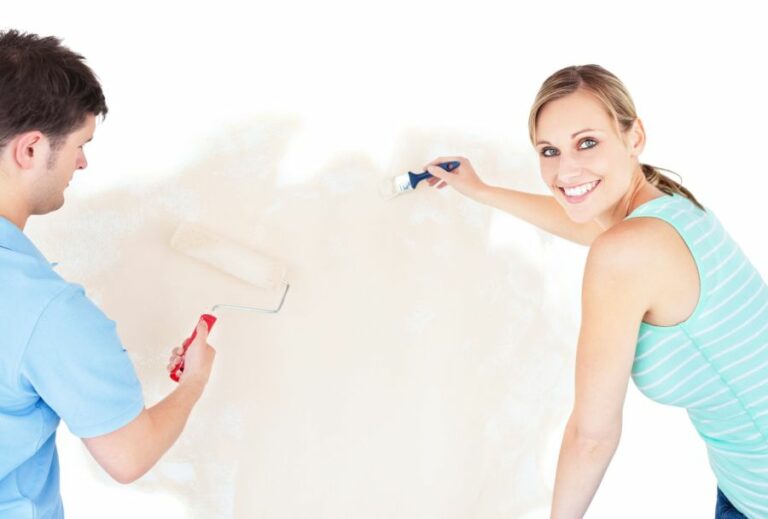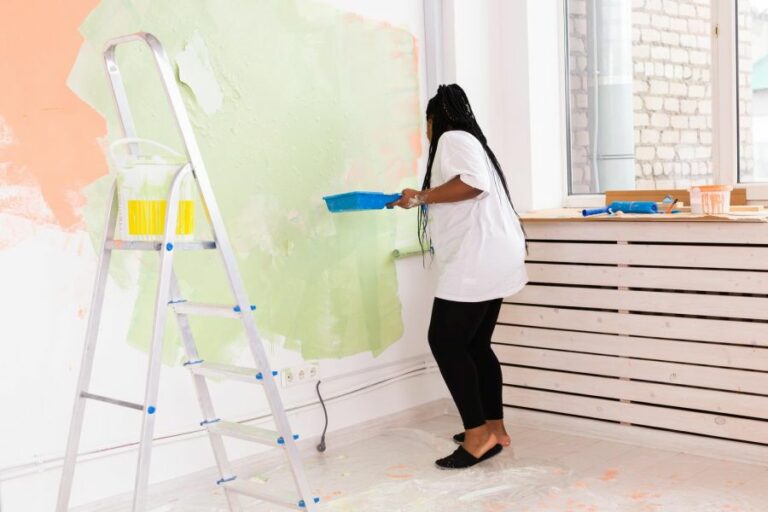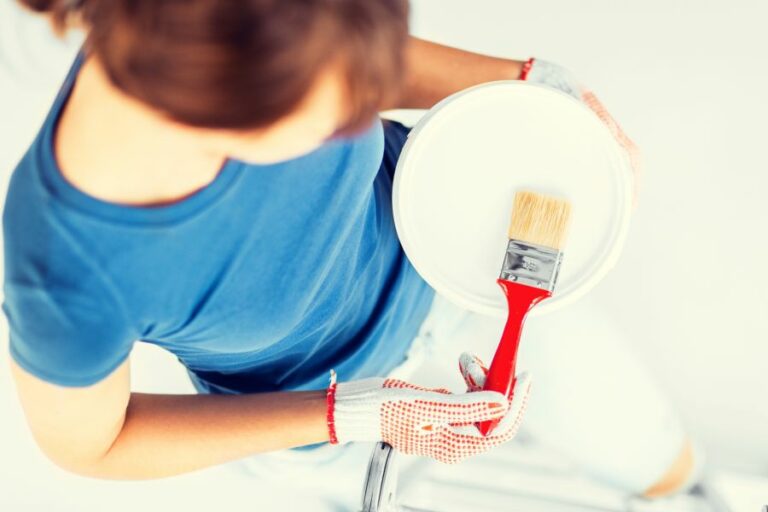Top Outdoor Wood Furniture Paints for Long-Lasting Protection
Discover the secret to long-lasting, beautiful outdoor wood furniture with our guide on today’s best paint options. We’ve researched extensively and will reveal the top protection, durability, and style choices.
Say goodbye to fading, peeling, and weather damage as we introduce you to paints that can breathe new life into your patio set, Adirondack chairs, and more. Dive into our blog post and unlock your outdoor furniture’s full potential by giving it the perfect finish. Transform your backyard oasis now!
Best paint for outdoor wood furniture:
We will discuss the best paint types for outdoor wood furniture, including latex, acrylic, oil-based paint, and exterior wood stains. Factors to consider when choosing paint include durability, ease of application, drying time, color options, and environmental impact.
Latex and acrylic paints are recommended for their durability, application ease, and color variety, while exterior wood stains offer a natural finish. Proper preparation and patience during painting can result in long-lasting, visually appealing outdoor wood furniture.

Discover the perfect paint for your outdoor wood furniture with our expert recommendations. Learn how to enhance durability, protect against weather damage, and achieve a flawless finish. Ensure your pieces last for years with our comprehensive guide. Keep reading to transform your patio today!
Contents
- 1 Top-Quality Paint for Outdoor Wooden Furniture
- 2 Determining the Ideal Type of Paint for Outdoor Wooden Furniture
- 3 What Kind of Paint Is Best Suited for Outdoor Furniture Applications?
- 4 Is it necessary to apply primer to outdoor wooden furniture before painting?
- 5 How Can You Refurbish Antique Wooden Outdoor Furniture Through Painting?
Top-Quality Paint for Outdoor Wooden Furniture
Outdoor wood furniture can be a beautiful addition to any outdoor space, providing comfort and visual appeal. However, once exposed to the elements, wood can quickly lose color, develop cracks, and become susceptible to moisture damage.
One of the best ways to protect and improve the appearance of your outdoor wood furniture is by using the best paint specifically designed for this purpose. We will discuss the types of paint best suited for outdoor wood furniture and key factors to consider when choosing the right paint for your project.
• Types of Paint for Outdoor Wood Furniture
Several types of paint can be used for outdoor wood furniture, each with unique features and benefits. Some of the most common paint types include:
– Latex Paint
Latex paint is popular for outdoor wood furniture due to its easy application, quick drying time, and excellent durability. It’s also water-based, meaning it’s simple to clean and has little odor. Latex paint offers various colors and finishes, ensuring you’ll find the perfect match for your outdoor wood furniture.
– Acrylic Paint
Acrylic paint is another water-based option that provides excellent adhesion to wood surfaces, making it an ideal choice for outdoor wood furniture. This paint type offers high resistance to weather, moisture, and fading, ensuring your furniture will maintain its beautiful appearance for years.
Acrylic paint also offers a wide range of colors and finishes, allowing you to create a truly unique outdoor space.
– Oil-Based Paint
Oil-based paint is a traditional choice for wood furniture due to its high durability and long-lasting finish. This paint type offers great protection against weather and moisture and is particularly beneficial for areas with high humidity or extreme temperature changes.
However, oil-based paint can be more difficult to work with and usually takes longer to dry than water-based counterparts. It’s also important to note that oil-based paint has a strong odor and requires solvents for clean-up.
– Exterior Wood Stain
While not technically a paint, exterior wood stain is worth considering when updating outdoor wood furniture. Wood stains are designed to penetrate the wood surface, providing a rich and natural finish that enhances the wood’s natural texture and grain.
Stains offer excellent protection against water, UV rays, and mildew, prolonging the life of your outdoor wood furniture. Choosing an exterior wood stain specifically designed for outdoor use is essential since interior wood stains typically don’t offer the same level of protection.
• Factors to Consider When Choosing Paint for Outdoor Wood Furniture
Several key factors must be remembered when selecting the best paint for your outdoor wood furniture. These include:
– Durability
One of the most critical factors to consider is the paint’s durability, as outdoor wood furniture is constantly exposed to the elements. Look for paints specifically designed for outdoor use and offer UV protection, weather resistance, and water resistance to ensure long-lasting results.
– Ease of Application
The paint’s ease of application is another important consideration, as some paint types can be more challenging to work with than others. Water-based paints, such as latex and acrylic, tend to be easier to apply, while oil-based paints may require more skill and additional tools for application.
– Drying Time
It’s essential to consider the drying time when choosing paint, especially if you’re working within a limited time frame or want to use your furniture soon after painting. Water-based paints typically dry faster than oil-based paints, with latex paint often having the quickest drying time.
– Finish and Color Options
Consider your desired finish and color options when selecting paint. Some paint types offer a broader range of colors and finishes than others. For instance, latex and acrylic paints provide various color and finish options, allowing you to customize your outdoor wood furniture to match your style and decor.
– Environmental Factors
Some paints are more eco-friendly than others. Water-based paints, such as latex and acrylic, tend to be more environmentally friendly, emitting fewer volatile organic compounds (VOCs) than oil-based paints. If you’re concerned about the environmental impact of your paint choice, check the paint’s VOC levels before purchasing.
• My Recommendations
In my experience, latex and acrylic paint are excellent outdoor wood furniture choices. They offer an optimal mix of durability, ease of application, and a wide range of color and finish options. I also appreciate the lower odor and environmental impact of water-based paints. An exterior wood stain is another great option for a more natural finish.
When preparing your outdoor wood furniture for painting, properly clean, sand, and prime the surface to ensure the best possible adhesion and finished appearance. And most importantly, take your time and enjoy the process, as a beautifully painted piece of outdoor wood furniture can provide years of enjoyment and enhance any outdoor space.
No. | Brand | Paint Name | Finish | Durability |
|---|---|---|---|---|
1 | Rust-Oleum | Painter’s Touch General Purpose Paint | Gloss | High |
2 | KILZ | Exterior Siding, Fence, and Barn Paint | Satin | High |
3 | Behr | Premium Plus Exterior Paint & Primer | Various | High |
4 | Montage Signature | Exterior Eco-Friendly Paint | Semi-Gloss | Medium |
5 | Valspar | SeasonPlus Exterior Paint + Primer | Various | High |
Determining the Ideal Type of Paint for Outdoor Wooden Furniture
Outdoor wood furniture experiences harsh environmental conditions such as sunlight, rain, and humidity that can lead to damage, fading, and rot. Choose the right paint to maintain the furniture’s longevity and look stunning.
We will explore some of the best paint options for outdoor wood furniture and share tips for a successful painting project.
• Types of Paint for Outdoor Wood Furniture
Different types of paint are available for outdoor wood furniture, with varying levels of resistance to exterior elements. Let’s dive into the most popular paint types and their unique properties:
– Acrylic Latex Paint
Acrylic latex paint has become popular for outdoor wood furniture due to its excellent adhesion, durability, and water resistance. It retains color well, resisting fading due to sunlight, and dries quickly to form a protective film.
I recommend using top-quality acrylic latex paint to ensure a lasting and durable finish on your outdoor wood furniture. While it may be more expensive than other types, the long-term benefits outweigh the upfront costs.
– Oil-Based Paint
Oil-based paint has been the traditional go-to choice for wood furniture painting projects. It is known for its durability, ease of application, and ability to withstand harsh weather conditions. However, it is slowly being replaced by acrylic latex paint, mainly due to the former’s long drying time and level of volatile organic compounds (VOCs).
While oil-based paint remains a viable option, it’s essential to remember that it can take up to 48 hours to dry and requires a solvent like mineral spirits for cleaning.
– Exterior Stain
While not technically a paint, exterior stain is another popular option for protecting and enhancing the appearance of outdoor wood furniture. Stains penetrate the wood grain, providing water resistance, and UV protection and highlighting the wood’s natural beauty.
Stains come in various finishes, including transparent, semi-transparent, and solid. Transparent stains offer minimal color, retaining the wood’s natural appearance, while solid stains provide an opaque finish, similar to paint. Choosing the right stain comes down to personal preference and the desired look for wood furniture.
• Preparing the Furniture for Painting
Before you start painting your outdoor wood furniture, proper preparation is crucial for a smooth, durable result. Follow these steps to ensure your furniture is adequately prepped:
- Clean the surface: Begin by cleaning the furniture to remove any dirt, dust, or mold. A mixture of warm water and mild detergent should suffice. After cleaning, ensure the furniture is completely dry before proceeding.
- Sand the surface: Sand the furniture to remove any existing finish and create an even, smooth surface. Start with coarse sandpaper (80-100 grit) and progress to the finer grit (120-150 grit) to ensure a perfect surface. Remember to always sand with the grain to avoid scratches.
- Apply primer: Before painting, apply a primer to the wood surface to ensure better adhesion and durability. Choose a primer compatible with the paint you plan to use. For example, use a water-based primer for acrylic latex paint or an oil-based primer for oil-based paint. Allow the primer to dry for the recommended time before applying any paint.
• Tips for Painting Outdoor Wood Furniture
Now that your furniture is prepared, follow these tips to achieve a professional and long-lasting finish:
- Choose the right brush: Investing in a high-quality paintbrush is essential for a smooth, even application. I recommend using a synthetic bristle brush for acrylic latex paint and a natural bristle brush for oil-based paint.
- Apply thin, even coats: Multiple thin coats of paint are better than one thick coat. This approach ensures proper drying and a durable finish. Allow the paint to dry thoroughly between each coat, and lightly sand any rough spots with fine-grit sandpaper.
- Use a sealant: To extend the life of your paint job, consider applying a clear sealant or varnish after the final coat of paint. This step will protect the furniture from moisture, UV rays, and other elements, enhancing its longevity. Choose a compatible sealant based on the type of paint you used.
- Allow ample drying time: Ensure sufficient drying time between coats before using the furniture. Rushing this process can lead to a weak paint job.
In conclusion, acrylic latex paint and oil-based paint are excellent options for outdoor wood furniture, while exterior stains offer a slightly different yet still protective finish. Ensure that you adequately prepare your furniture, using the right tools and techniques to achieve a fantastic paint job that will last for years.
Type of Paint | Advantages | Disadvantages |
|---|---|---|
Water-Based Acrylic Paint | Low odor, fast drying, easy to clean up with water, durable finish, resistant to fading and UV damage | May not adhere well to oily or glossy surfaces without proper prep, not as resistant to chemicals and solvents as oil-based paint |
Oil-Based Paint | It may not adhere well to oily or glossy surfaces without proper prep, not as resistant to chemicals and solvents as oil-based paint | Strong odor, slower drying time, cleanup requires solvents, may fade or yellow over time, not as environmentally friendly |
Latex Paint | Low odor, fast drying, easy to clean up with water, can expand and contract with the wood, reducing chances of cracking and peeling | Not as durable as acrylic or oil-based paint, may require more coats for good coverage, and is more limited in color choices |
Exterior Alkyd Paint | Highly durable, exceptional adhesion, excellent resistance to wear and tear, mildew resistant, good coverage | Strong odor, slow drying time, cleanup requires solvents, less environmentally friendly |
What Kind of Paint Is Best Suited for Outdoor Furniture Applications?
When painting outdoor furniture, selecting the right type of paint is crucial for achieving optimal results and prolonging the life of your beloved pieces. With so many options available, determining which paint best suits your needs can be challenging.
This comprehensive guide will outline various paint types and recommend choosing the most appropriate paint for outdoor furniture.
• Types of Paint for Outdoor Furniture
Not all paints are created equal; some types are more suitable for outdoor furniture applications than others. Let’s explore the different options available and their distinct characteristics.
– Oil-based Paints
Oil-based paints have been a traditional choice for outdoor furniture for many years, mainly due to their durability and resistance to wear and tear. These paints form a hard, protective layer on the surface, making them less susceptible to water damage, mildew, and fading.
Oil-based paints also provide excellent adhesion, ensuring the paint remains intact even when exposed to harsh weather conditions.
However, oil-based paints have long drying times and emit strong odors, which may be an issue for some people. They are less environmentally friendly than some of the newer options available today.
– Latex Paints
Latex, or water-based, paints are another popular option for outdoor furniture since they are easy to work with and more eco-friendly than oil-based paints. They dry quickly, emit fewer odors, and can be easily cleaned up with soap and water.
Furthermore, latex paints also offer excellent resistance to fading, mildew, and other common outdoor furniture problems.
However, latex paints may provide a different level of durability than oil-based products, meaning they might require more frequent touch-ups or repainting.
– Acrylic Paints
Acrylic paints are a newer option for outdoor furniture painting, offering a fantastic blend of durability and eco-friendliness. They are water-resistant, UV-resistant, and less likely to crack or peel when exposed to the elements. Acrylic paints also retain excellent color, ensuring your furniture remains vibrant and beautiful for years.
When using acrylic paint, choose a product specifically designed for outdoor use, as regular acrylic paint may not have the necessary added protection for outdoor applications.
– Spray Paints
Spray paints are a convenient and efficient way to paint outdoor furniture, especially if you want to achieve a smooth and even finish. These paints come in various formulations, including oil-based, latex, and acrylic, allowing you to choose the best suits your needs.
When selecting spray paint, look for one specifically designed for outdoor applications and ensure it’s compatible with the material of your furniture.
• Choosing the Right Paint for Different Materials
The material of your outdoor furniture is crucial in determining the type of paint you should use. Let’s discuss which paint is best suited for different outdoor furniture materials.
– Wood
Oil-based paints are highly recommended for wooden outdoor furniture because they penetrate the wood’s surface and protect against moisture and other elements.
However, if you prefer a more environmentally friendly option or require a faster drying time, consider using an acrylic or latex paint specifically designed for outdoor wooden furniture.
– Metal
When painting outdoor metal furniture, consider using a rust-resistant primer before applying oil-based or acrylic paint. This will ensure that your metal furniture remains protected from rusting and corrosion.
While using latex paint for metal surfaces, apply a metal-specific primer to ensure proper adhesion and durability.
– Plastic
Plastic outdoor furniture can be painted with acrylic spray, which bonds well to the surface and offers excellent UV protection. When using paint for plastic furniture, ensure it is designed specifically for plastic surfaces, as regular paints may not adhere well or provide adequate protection.
– Wicker and Rattan
For wicker and rattan outdoor furniture, use a paint that can penetrate the porous surface to provide proper protection. Oil-based or latex paints with added UV protection are ideal for these materials. Apply multiple thin coats for an even finish and thorough protection.
• Final Recommendations
When deciding on paint for your outdoor furniture, consider the type of material it’s made from and prioritize your needs, such as durability, drying time, and environmental impact. Oil-based paints remain a tried-and-true option for their durability and protection levels, while latex and acrylic paints offer excellent performance alongside eco-friendliness.
Follow proper preparation and application techniques to yield the best results regardless of the paint type. Researching and selecting the right paint for outdoor furniture will ensure that your pieces remain beautiful, functional, and protected for years.
Type of Paint | Description |
|---|---|
Exterior Latex Paint | It provides a smooth, hard finish that is resistant to moisture and easy to clean |
Oil-based Paint | Fast-drying paint, which is available in various finishes makes it easier to cover hard-to-reach areas |
Acrylic Paint | Water-soluble paint that is quick-drying and provides excellent adhesion to different surfaces |
Spray Paint | It creates a chalky, matte finish and requires little to no surface preparation |
Chalk Paint | Creates a chalky, matte finish and requires little to no surface preparation |
Is it necessary to apply primer to outdoor wooden furniture before painting?
Properly painting outdoor wood furniture is crucial to remain beautiful, protected, and long-lasting. One of the essential steps in painting wood furniture is priming. Priming helps create a smooth and uniform base for your paint, enhancing its durability and appearance.
We will discuss the importance of priming outdoor wood furniture before painting, the various types of primers, and a step-by-step guide on effectively priming and painting your wood furniture.
• Why Priming Outdoor Wood Furniture Is Important
Priming outdoor wood furniture is essential for a professional, long-lasting painting finish. Some of the key reasons why priming wood furniture is vital to include the following:
– Enhancing Adhesion
A primer acts as an intermediary layer between the wood surface and the paint, improving adhesion and preventing the wood grain from showing through. This minimizes paint peeling, chipping, and cracking, making the paint job last longer.
– Protecting The Wood
Outdoor wood furniture is susceptible to weather conditions, moisture, and UV rays. A primer layer provides an added defense to protect the wood from these external factors.
– Reducing Stain Bleeding
Primer helps seal wood surfaces, minimizing stain and knot bleeding before painting. This is particularly essential for woods like cedar and redwood, known for their tannin content.
– Saving On Paint
A primed surface will require fewer coats of paint, ultimately saving time and money.
• Choosing The Right Primer For Outdoor Wood Furniture
With various primers in the market, selecting the right one for your outdoor wood furniture can be challenging. Here are some general guidelines to help you choose the right primer:
– Oil-Based Primers
Oil-based primers are traditional, and they provide excellent adhesion and stain-blocking properties. They’re suitable for both indoor and outdoor wood furniture.
Pros
- Exceptional durability
- Suitable for various wood types
- Appropriate for high-humidity areas
Cons
- Slower drying time
- Cleanup requires solvents, like mineral spirits
– Latex Primers
Latex primers are water-based products, making them easy to clean up and environmentally friendly. They provide a durable and smooth base for various paint finishes.
Pros
- Fast drying time
- Low odor
- Water cleanup
Cons
- It may not be suitable for woods with high tannin content
- It may not provide the same level of adhesion as oil-based primers
– Stain-Blocking Primers
Stain-blocking primers are specifically formulated to prevent tannin and stain bleeding. They’re suitable for woods with high tannin content, like cedar, redwood, and other hardwood species.
Pros
- Excellent stain-blocking properties
- The smooth base for various paint finishes
Cons
- It may be more expensive
• How To Prime And Paint Outdoor Wood Furniture: A Step-By-Step Guide
Follow these steps to prime and paint your outdoor wood furniture effectively:
– Step 1: Prep Your Furniture
- Remove any hardware, such as knobs or hinges.
- Clean your furniture, removing dirt or debris using a soft brush and a mild detergent solution.
- Allow the furniture to dry completely.
– Step 2: Sand The Surface
- Use medium-grit sandpaper (80-120 grit) to remove existing paint, stains, or varnish.
- Follow up with fine-grit sandpaper (180-220 grit) to smooth the surface evenly.
- Remove any dust or particles left from sanding using a tack cloth or a soft brush.
– Step 3: Apply The Primer
- Select an appropriate primer as per the guidelines mentioned above.
- Stir the primer well before applying it.
- Using a high-quality brush, apply a thin coat of primer, ensuring even coverage.
- Let the primer dry per the manufacturer’s instructions, usually for 1-2 hours.
- Lightly sand the primed surface with fine-grit sandpaper to smoothen any imperfections.
- Wipe away any dust with a tack cloth or a soft brush.
– Step 4: Paint Your Furniture
- Choose the appropriate paint for your project – either oil-based or latex paint.
- Stir the paint well before applying it.
- Using a high-quality brush, apply thin and even coats of paint, working toward the wood grain.
- Allow the paint to dry as per the manufacturer’s instructions.
- Apply additional coats as needed, ensuring adequate drying time between coats.
– Step 5: Protect Your Furniture
- Apply a clear protective finish, like a polyurethane sealant, to enhance the paint’s durability and protect the wood from external factors.
- Let the furniture dry completely before using it.
By following these steps, you can prime and paint your outdoor wood furniture effectively, achieving a professional, lasting finish that will enhance the beauty and durability of your furniture.
• Conclusion
Priming outdoor wood furniture before painting ensures a smooth, durable, and long-lasting finish. It helps enhance adhesion, protect the wood, reduce stain bleeding, and save on paint. Y
ou can maintain your outdoor wood furniture’s beauty and durability by choosing the right primer, following proper priming and painting techniques, and protecting the painted surface.
How Can You Refurbish Antique Wooden Outdoor Furniture Through Painting?
Painting old wooden outdoor furniture can give it a new lease of life and help protect it from the elements. We will discuss the steps required to successfully paint your wooden outdoor furniture, from preparation to final touches.
• Step 1: Assessing the Condition of the Furniture
Before you begin, it’s important to assess the condition of the furniture you plan to paint. Check for any damage, such as wood rot or loose screws, and repair or replace any damaged parts before proceeding. If the current paint is peeling or chipping, it must be removed before applying a new coat.
• Step 2: Gather Your Materials
To paint your old wooden outdoor furniture, you will need the following materials:
- Medium-grit sandpaper or a sanding block
- Paintbrush or paint roller
- Paint tray or container
- Drop cloth or plastic sheeting
- A clean, damp cloth
- Wood putty (if needed)
- Wood primer
- High-quality exterior paint
- Clear wood sealer or topcoat (optional)
• Step 3: Prepare the Furniture
Before you can begin painting your wooden outdoor furniture, you need to prepare it by completing the following steps:
– Sanding
Lightly sand the entire furniture surface using medium-grit sandpaper or a sanding block. This will help to create a smooth surface for the paint to adhere to and remove any loose paint or debris. If your furniture has intricate details or hard-to-reach areas, using a folded piece of sandpaper will allow you to reach these spots more easily.
Be sure to sand in the direction of the wood grain to avoid damaging it.
– Cleaning
After sanding, use a clean, damp cloth to wipe down the furniture’s surface and remove any dust or debris. This will ensure that the paint will stick to the surface and prevent any imperfections from forming.
– Repairing
If you have any cracks or holes in your furniture, use wood putty to fill them in. Apply the putty with a putty knife, spread it into the damaged area, and then smooth it out until it is flush with the surrounding wood.
Allow the putty to dry according to the manufacturer’s instructions before moving on to the next step.
• Step 4: Apply the Primer
Wood primer is essential for creating a sturdy base for your paint to adhere to. Apply the primer to the entire furniture surface using a paintbrush or paint roller. Cover all surfaces, including nooks and crannies, and follow the wood grain for a seamless finish.
Allow the primer to dry according to the manufacturer’s instructions before moving on to the painting phase. Skipping the primer step could result in the paint not adhering properly and peeling or chipping down the road.
• Step 5: Paint the Furniture
Select high-quality exterior paint suitable for the type of wood your furniture is made from. Begin by stirring the paint well to ensure even color distribution. To keep things tidy, lay down a drop cloth or plastic sheeting under the furniture.
Using a paintbrush or paint roller, apply a thin coat of paint to the entire furniture surface, following the wood grain. Apply the paint with long, smooth strokes for an even and professional finish. Remember to coat any nooks and crannies for a complete, polished look.
Allow the first coat of paint to dry according to the manufacturer’s instructions before applying a second coat. Additional coats may be necessary depending on the desired color intensity and the paint’s coverage. Be sure to allow each coat to dry fully before applying the next.
• Step 6: Seal and Protect (Optional)
Consider applying a clear wood sealer or topcoat to your painted furniture for added protection from the elements and extended longevity. This will add a layer of protection, ensuring your paint job stays fresh and vibrant.
Follow the manufacturer’s instructions for the application and drying time of the wood sealer or topcoat. Be sure to choose a product compatible with the exterior paint you have used.
• Step 7: Reassemble and Enjoy
Once the paint and sealer (if used) have fully dried, reassemble your furniture if necessary. Then finally, it’s time to sit back and enjoy your beautifully renewed wooden outdoor furniture!
In conclusion, painting old wooden outdoor furniture is a simple and effective way to give your pieces a new look and protect them from the elements. Following the steps outlined here, you can ensure a long-lasting and professional finish that will keep your furniture looking great for years.
Step | Description |
|---|---|
1 | Prepare the furniture by cleaning it with soap and water, removing dirt and grime. |
2 | Select an appropriate exterior paint or stain for your wooden outdoor furniture, considering durability, color, and finish factors. |
3 | Wipe the furniture with a damp cloth to remove any sanding dust. |
4 | Apply a layer of exterior wood primer using a paintbrush or roller, following the manufacturer’s instructions for application and drying time. |
5 | Select an appropriate exterior paint or stain for your wooden outdoor furniture, considering factors such as durability, color, and finish. |
6 | Apply the paint or stain to the furniture using a paintbrush, roller, or spray gun, following the manufacturer’s instructions for application and drying time. |
7 | Allow the paint or stain to dry completely, then apply additional coats if necessary for full coverage and desired finish. |
8 | Apply a protective sealant or topcoat to the painted furniture, following the manufacturer’s instructions for application and drying time, to ensure long-lasting protection against the elements. |

